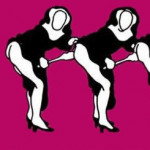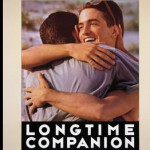AIDS is an everyday experience. The dates on this calendar all relate to the AIDS crisis. Some are globally known; others are drawn from personal experiences.
This online calendar is produced in partnership with Visual AIDS and is an extension of the exhibition “EVERYDAY,” which was curated by Jean Carlomusto, Alexandra Juhasz and Hugh Ryan in 2016. The exhibition and accompanying print calendar explored the AIDS crisis—historically and currently—through the lens of art and ephemera that examines and evidences daily experiences and practices in response to HIV/AIDS. Artists featured in the “EVERYDAY” exhibition were invited to submit as many dates to the calendar as they desired.
We invite you to reflect upon these dates, and this artwork, in dialogue with one another. We also encourage you to submit dates of your own by clicking here. Submissions may include the date of your diagnosis, the date of the loss of a loved one to AIDS-related illness or a significant milestone in your life with HIV/AIDS.
New submissions will be continually added to the calendar because AIDS is not over.
DECEMBER 1
The World Health Organization (WHO) launches World AIDS Day. (1988)

Visual AIDS launches Day With(out) Art. The annual event was established to make the public aware that AIDS affects everyone. (1989)
The U.S. Centers for Disease Control and Prevention launch the Business Responds to AIDS program to help large and small businesses meet the challenges of HIV/AIDS in the workplace and the community. (1992)
With support from United Colors of Benetton, ACT UP Paris slips a giant pink condom over the city’s Luxor Obelisk, located in the center of the Place de la Concorde. (1993)
The United States Postal Services issues a 29-cent commemorative stamp to raise awareness about AIDS. Available nationwide, the stamp features a red ribbon symbolizing compassion and awareness. (1993)
The first official observation of World AIDS Day at the National AIDS Memorial Grove in San Francisco takes place. (1994)
The indie band Bright Eyes releases A Christmas Album, a collection of holiday tracks whose proceeds benefit the Nebraska AIDS Project. (2002)
The World Health Organization announces the “3 by 5” initiative to bring treatment to 3 million people by 2005. (2003)
Serodiscordant couple Shawn Decker and Gwenn Barringer stage a “bed-in” at a Kenneth Cole store in Grand Central Station to commemorate World AIDS Day. (2006)
Celebrities such as Alicia Keys, Lady Gaga, Justin Timberlake and Usher join the “Digital Life Sacrifice” campaign and pledge to sign off from Facebook and Twitter on World AIDS Day until Keep a Child Alive raises $1 million for its programs. (2010).
Protesters from Health GAP, Queerocracy, VOCAL-NY and Housing Works march through the Financial District in New York City wearing Robin Hood costumes to highlight the coalition’s demand for a “Robin Hood” tax on speculative financial transactions. Activists say the small tax could fund housing and services for low-income New Yorkers living with HIV. (2010)
The New York City World AIDS Day Coalition launches the “End AIDS NY 2020” campaign to end AIDS and reduce new HIV infections to 750 per year by 2020. The coalition consists of more than 40 AIDS service organizations and community-based groups as well as medical providers, the New York City health department and the speaker’s office of the New York City Council. (2014)
Alternate Endings, a video program commissioned by Visual AIDS for the 25th anniversary of Day With(out) Art, premieres at the SVA Theatre in New York City. (2014)
The New York City AIDS Memorial, a tribute to the over 100,000 New Yorkers who have died of AIDS-related illness, is unveiled at a public dedication on World AIDS Day. (2016)
Prince Harry and Meghan Markle visit a Terrence Higgins Trust World AIDS Day charity fair in Nottingham. The event marks their first public appearance as an engaged couple. (2017)
Five trucks with large LED billboards drive around New York City displaying quotes by activists, artists, educators, poets and people living with HIV for an “interactive art experience” titled #LightTheFight. The project is a collaboration between artist Jenny Holzer and the NYC AIDS Memorial Arts and Education Initiative. (2018)
DECEMBER 2
ACT UP holds its first major fundraiser, an art auction co-chaired by David Hockney and Annie Leibovitz. (1989)
AIDS activist Katrina Haslip dies of AIDS-related causes at age 33. Haslip’s advocacy helped force the Centers for Disease Control and Prevention to expand the definition of HIV/AIDS to include more illnesses that affect women with the condition. (1992)
DECEMBER 3
AIDS activists from all over the country return to the CDC in Atlanta to demand the immediate expansion of its narrow definition of AIDS as well as a future policy of updating the list every six months. (1990)
The U.S. Department of Health and Human Services launches Ready, Set, PrEP, a national program that makes medications for pre-exposure prophylaxis (PrEP), taken to prevent HIV, available at no cost to people without prescription drug insurance coverage. (2019)
DECEMBER 4
ACT UP/Los Angeles meets for the first time in West Hollywood. (1987)
DECEMBER 5
DECEMBER 6
The U.S. Public Health Service publishes recommendations on preventing mother-to-child transmission of HIV, which include delaying pregnancy until more is known about the risks of transmission and avoiding breast-feeding. (1985)
FDA approves Invirase (saquinavir) the first protease inhibitor for use in combination with other medications. (1995)

Bill ClintonDreamstime.com
President Clinton hosts the first White House Conference on HIV/AIDS. (1995)
DECEMBER 7

Angels in America premieres on HBO. Directed by Mike Nichols, the miniseries is based on the Pulitzer Prize–winning play by Tony Kushner. (2003)
The U.S. Centers for Disease Control and Prevention’s Act Against AIDS initiative launched a multimedia campaign titled “Doing It,” to promote HIV testing as a regular part of everyone’s health routine. (2015)
DECEMBER 8
Kimberly Bergalis, one of five patients who made national headlines for allegedly contracting HIV from a dentist in Florida, dies of AIDS-related causes. (1991)
The U.S. Department of Health and Human Services Office of HIV/AIDS and Infectious Disease Policy hosts a webinar community listening session on strategies for improving HIV prevention and care for transgender women of color. (2016)
DECEMBER 9
DECEMBER 10
San Francisco nurse Bobbi Campbell writes a column for the San Francisco Sentinel about his experiences living with Kaposi sarcoma (KS) and dubs himself the KS Poster Boy. Two months earlier, he had posted photos of his lesions in the window of a local drugstore to alert the community about the disease. (1981)
The Centers for Disease Control and Prevention reports the first case of AIDS involving an infant who received blood transfusions. (1982)
ACT UP New York holds its controversial “Stop the Church” demonstration outside St. Patrick’s Cathedral in New York City. In collaboration with Women’s Health Action Mobilization, protesters challenge the Catholic Church’s messaging around HIV/AIDS. (1989)
The Treatment Action Campaign forms to advocate for greater access to HIV treatment for all South Africans by educating the public about issues concerning the availability, affordability and use of HIV treatments. (1998)
DECEMBER 11
Canadian sex worker and AIDS activist Danny Cockerline dies of AIDS-related complications. (1995)
DECEMBER 12
Grethe Rask, a Danish physician and surgeon, dies of AIDS-related causes. (1977)
DECEMBER 13
Pennsylvania toddler Dwight Burk, age 20 months, dies of AIDS-related complications in Creeson, Pennsylvania. He is the first child of a person living with hemophilia to be born with AIDS. (1985)
The first national Conference on Women and HIV Infection is held in Washington, DC. (1990)
Congress votes to lift the ban on using federal funding for needle exchange programs nationwide. (2009)
Elizabeth Taylor’s jewelry collection is auctioned off at Christie’s for $115.9 million. Proceeds of the sale benefit The Elizabeth Taylor Foundation. (2011)
DECEMBER 14
Jeff Getty, a 38-year-old man living with AIDS in San Francisco, is injected with bone marrow removed from a baboon. The hope is that the transplanted marrow cells, believed to be resistant to HIV, will take root in his severely damaged immune system. (1995)
Well-known AIDS activist Dennis deLeon, president of the Latino Commission on AIDS, dies of AIDS-related causes, at age 61. (2009)
DECEMBER 15
DECEMBER 16

Singer Sylvester dies of AIDS-related complications. (1988)
HIV advocate Mark S. King throws a virtual 60th birthday bash during the COVID-19 pandemic to raise funds for The Reunion Project. (2020)
DECEMBER 17

Ryan White
Ryan White is diagnosed with AIDS. (1984)
The Latino Commission on AIDS is formed in response to the lack of HIV prevention and care for the Latino community. (1990)
Congress votes to restore a ban on using federal funding for needle exchange programs. (2011)
DECEMBER 18
The CDC expands the definition of AIDS to include those living with HIV with a CD4 count below 200. (1992)
Congress passes a spending bill that permits states and local communities, under limited circumstances, to use federal funds to support syringe services programs. (2015)
DECEMBER 19
A Los Angeles Times poll finds that a majority of Americans favor quarantining people who have AIDS. (1985)
LJ Roberts protests the censorship of David Wojnarowicz in the exhibition Hide/Seek: Difference and Desire in American Portraiture. (2010)
DECEMBER 20
Max Robinson, the first Black network news anchor in the United States, dies of AIDS-related causes at age 49. (1988)
Larry Kramer delivers a rousing call to action at Vito Russo’s memorial service. (1991)
Retail chain H&M announces the launch of the new clothing line Fashion Against AIDS, aimed at spreading global HIV/AIDS awareness among young people. (2007)
DECEMBER 21
Long-term survivor Grahame Perry dies suddenly in his home. (2015)
The U.S. Food and Drug Administration announces it will lift its 30-year ban on all blood donations by men who have sex with men and institute a policy that allows them to donate blood if they have not had sexual contact with another man in the previous 12 months. (2015)
DECEMBER 22

Philadelphia opens in limited release in the United States. Tom Hanks goes on to win the Academy Award for best actor. (1993)
DECEMBER 23
The Food and Drug Administration approves an oral HIV test, the first non–blood-based antibody test for HIV. (1994)
The journal Science announces the HPTN 052 study —which showed thatHIV treatment also preventedHIV transmission to sexualpartners—as its 2011 Breakthrough of the Year. (2011)
DECEMBER 24
Veteran Journalist Thomas Morgan dies of AIDS-related complications in Southampton, Massachusetts, at age 56. (2007)
DECEMBER 25
ACT UP sends New York Times’ AIDS reporter Gina Kolata a Christmas card to protest her inadequate AIDS coverage. (1989)
DECEMBER 26
Photographer Herb Ritts dies of AIDS-related complications. (2002)
New Jersey enacts a law that will mandate HIV screening for all pregnant women in the state beginning in 2008. (2007)
Andrew Hunter, Australian sex worker and director of the Network of Sex Work Projects (NSWP), dies of AIDS-related complications. (2013)
DECEMBER 27
DECEMBER 28
DECEMBER 29
AIDS-denialist Christine Maggiore dies of AIDS-related complications. (2008)
DECEMBER 30
Time magazine names HIV/AIDS researcher David Ho, MD, its “Man of the Year” for his work on highly active antiretroviral therapy. (1996)
DECEMBER 31
The World Health Organizations estimates 36.7 million people are living with HIV worldwide. (2015)
About the Artwork

Nancer Lemoins, I’ve Seen and Done, 2014, Silkscreen poster
I did this image as part of an ongoing series about homeless women. I talked with women on the streets and drew their portraits, and put those together with quotes. I was particularly moved by what this woman said because it rang so true. We ignore older and marginalized women at a great loss. —Nancer Lemoins

Founded in 1988, Visual AIDS is the only contemporary arts organization fully committed to raising AIDS awareness and creating dialogue around HIV issues today, by producing and presenting visual art projects, exhibitions, public forums and publications—while assisting artists living with HIV/AIDS. Visual AIDS is committed to preserving and honoring the work of artists with HIV/AIDS and the artistic contributions of the AIDS movement.







Comments
Comments